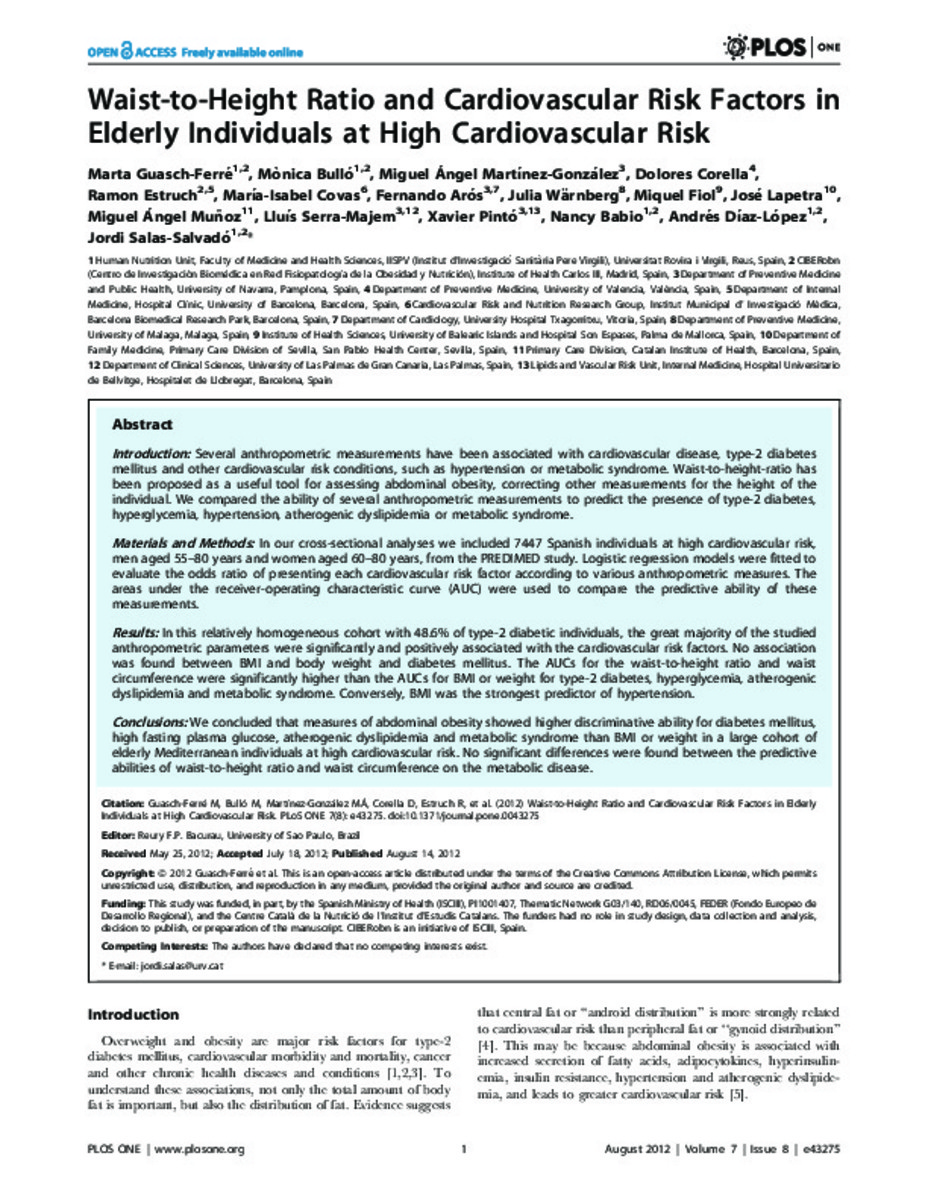Waist to height ratio and cardiovascular risk factors in elderly individuals at high cardiovascular risk
Palabras clave :
Metabolic syndrome
Anthropometric indicators
Abdominal obesity
Screening tool
Disease risk
Metaanalysis
Men
Classification
Questionnaire
Association
Fecha de publicación :
2012
Editorial :
Public Library of Science
Cita:
Guasch-Ferré M, Bulló M, Martínez-González M.A, Corella D, Estruch R, Covas M.I, et al. Waist to height ratio and cardiovascular risk factors in elderly individuals at high cardiovascular risk. PLoS One. 2012;7(8):e43275.
Aparece en las colecciones:
Estadísticas e impacto
0 citas en

0 citas en

Los ítems de Dadun están protegidos por copyright, con todos los derechos reservados, a menos que se indique lo contrario.








